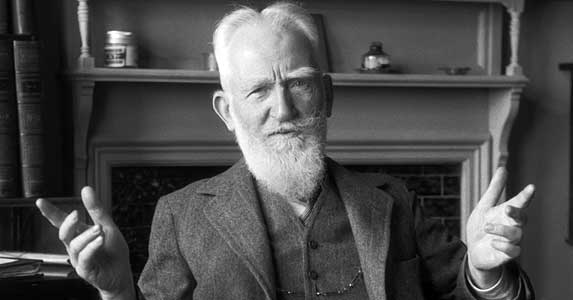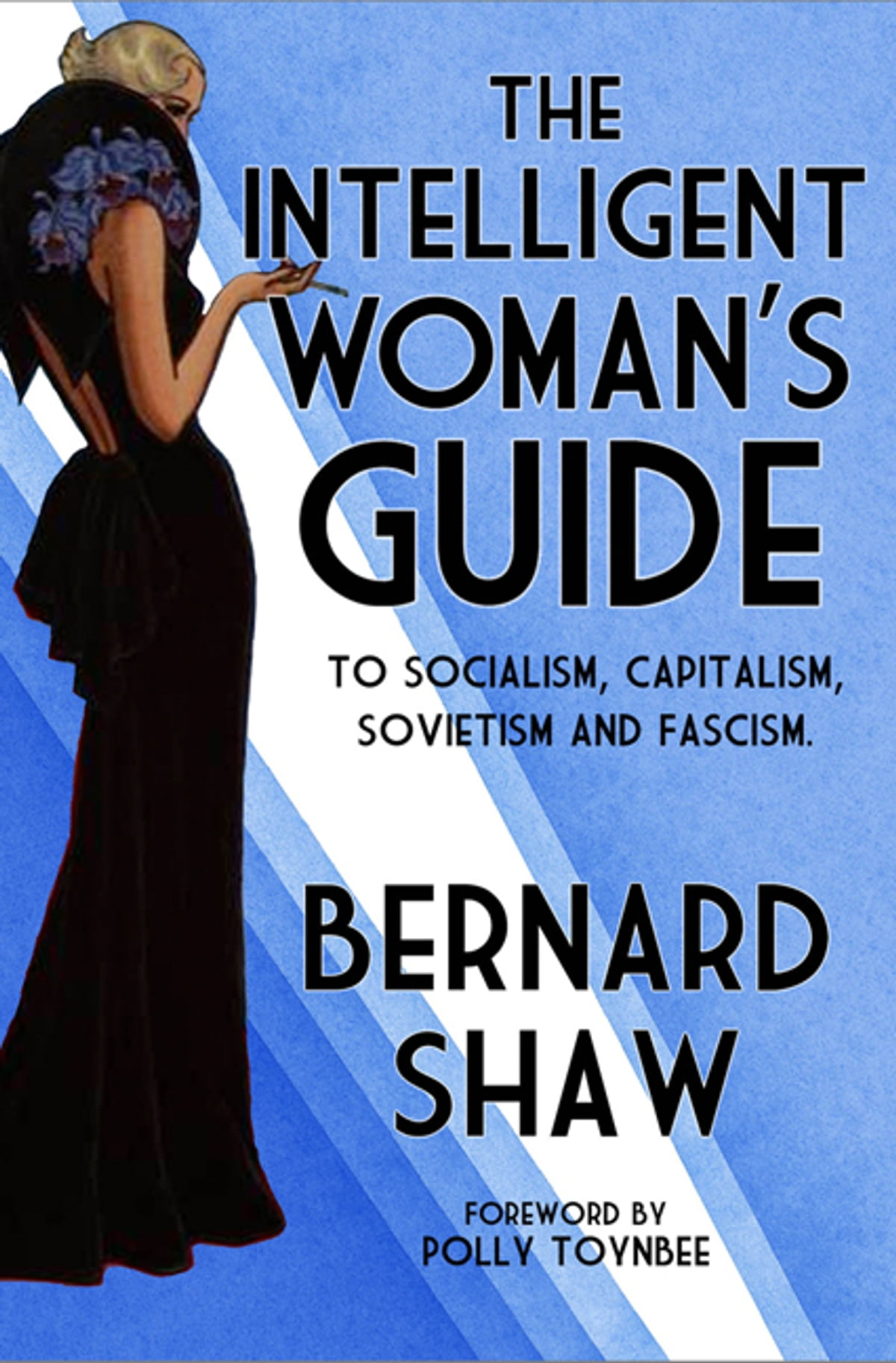‘The Intelligent Woman’s Guide to Socialism, Capitalism, Sovietism, and Fascism’ by Bernard Shaw, a renowned Irish playwright and a socialist, was first published in 1928. In this book, he addresses the perils of capitalism and defends socialism while outlining its principles. Dedicated to his sister-in-law Mary Stewart Cholmondeley, whom he referred to as ‘The intelligent woman’, the book is an answer to her question on “a few of [his] ideas of socialism”. His sister-in-law asked him what socialism entails and he responded by writing this book. British journalist and author Polly Toynbee, who writes a column for the newspaper “The Guardian,” wrote the preface to the book in 2012. Shaw’s sister-in-law, according to Toynbee, anticipated a succinct overview or a straightforward instruction manual on his political and ethical ideas. Instead, in 1928, she was given a wonderful speech that covered a wide range of topics, from marriage and raising children to managing a business. Honestly, if I were given an unnecessarily lengthy response like this, I probably would not have appreciated it much.
Influenced by Marxism, the central theme of the book is class and inequality in society and the author refuses to romanticize the poor. Rather, he advocates for the establishment of an equal pay society in which everyone gets and owns the same amount of money, regardless of skill, effort, age, gender, personality, IQ, inheritance, merit, or power. He has high hopes for humanity’s capability to advance morally but he contends that this is only realistic in a socialist society. However, in a world where everything is run by money, where even relationships are defined by money, the task of developing such a society is challenging. He addresses many intriguing questions such as why in a world full of misery, the poor do not rebel and how much is enough to have in an economy.
The book, which was initially published in 1912, is still relevant to many problems with global economies and growing fascism today. Socialism is the primary theme of the book, which covers 86 topics under a variety of sub-topics. Shaw emphasizes on reflecting how much we and our neighbors ought to have. He emphasizes the importance of having personal opinions that can influence public opinion on these issues of distribution of resources and income. His answer to how much should a person earn and buy, reminded me of perhaps a more relevant and interesting book on environmentalism by renowned Indian historian Ramchandra Guha titled ‘How Much Should a Person Consume’. I’ll reserve my opinions on that book for another time.
When describing socialism and communism, Shaw says that these are not plans for distributing wealth in one lady’s circle only, but for distributing wealth to everyone; and as the amount to be distributed each year is limited, he advises, “Conceive yourself as a national trustee with the entire income of the country placed in your hands to be distributed so as to produce the greatest social well-being for everybody in the country.”
Additionally, he asserts that large populations cannot effectively practice communism; rather, families with close-knit relationships and low levels of income corruption are better suited to do so. He also examines, using appropriate instances, the drawbacks of communism.
For instance, he claims that attempting to popularize anything that is not already being utilized or at the very least accepted by everyone will only lead to problems.
We all use roads and bridges, and we all agree that they are essential and useful things. However, we have strong disagreements on topics like religion, moderation, and going to the theater.
The book contains certain portions that are still relevant today, including the one on the decline in employment. In the modern era, we would refer to these large multiple stores as malls. He discusses how these stores are robbing tiny independent stores of their customers and ruining the business of the store owners that ran them.
As the title of the book contains ‘intelligent woman’, I was looking for his take on the impact of capitalism on women. He argues that Industrialization had a more negative effect on women than on men. Women who wanted industrial employment could only do so by offering to do it for less than males because no industrial employer would hire a woman if he could get a man for the same salary.
This was conceivable because even when the man’s salary was below the poverty line, it was the wage of a family, not just one individual.
The father had to use it to support his wife and kids, without whom the capitalist system would have ended quickly due to a lack of young employees to take the place of the elderly (p. 204).
Moreover, Shaw touches upon the unequal pay and the unpaid services of women and the property rights issues prevailing in society. The transfer of women’s money and property to their men is a common phenomenon even today. By law, everything a woman possessed became the property of her husband when she married: a state of things that led to such monstrous abuses that the propertied class set up an elaborate legal system of marriage settlements, the effect of which was to hand over the woman’s property to some person or persons yet unborn before her marriage; so that though she could have an income from the property during her life, it was no longer her property, and therefore her husband could not make ducks and drakes of it (p. 205).
Shaw posits that under a capitalist system, women found themselves worse off than men because, as Capitalism made a slave of the man, and then, by paying the woman through him, made her his slave, she became the slave of a slave, which is the worst sort of slavery. He further writes, “This suits certain employers very well because it enables them to sweat other employers without being found out. And this is how it is done. A labourer finds himself bringing up a family of daughters on a wage of twenty-nine shillings a week in the country (it was thirteen in the nineteenth century) or, in or near a city, of from thirty (formerly eighteen) to seventy, subject to deductions for spells of unemployment.”
Along with the issues of capitalism and labour market and how it made women’s conditions worse, he also comments on the marriage institution from a communist perspective. He discusses how marriage becomes a compulsion for a woman and how she has to do everything possible to become someone’s wife. One thing that I did not find convincing was his ambiguous argument that women are also forced to trick men into marriages and when the men realize this, it does not lead to a happy marriage. As if the men are like innocent helpless children who can be “tricked”? While his observation of prostitution stands convincing that women are forced to dance in street and sell themselves, not men, his statement that capitalism acts on women as a continual bribe to enter into sexual relations for money, whether in or out of marriage remains unconvincing.
To sum up, the book gives a good start to the discussion on the topics that were relevant at the time when the author wrote the book and many of the topics are relevant even today. Nevertheless, when the readers approach it further, the book may make them feel lost. It is as if the author wants to address every issue under the umbrella discipline of economics. As a result, these details make the book bulky. There are many topics that an ordinary reader would not understand or would not will to read them. In fact, to an extent, the problem does not lie with the author’s approach but with the time when we are reading it. Despite this, the book suggests that we need to cooperate with each other for a better society and a better system. His illustration of fascism is much relevant even today as he notes, “There is nothing new in Fascism except the circumstances in which it is now being tried.”
It is a compelling read for anybody interested in learning how capitalism operates, dominates, and exploits not only our bodies but also our minds. Thus, those who want to understand what socialism and communism have to offer to the masses should also give this book a try. There are a few observations of the author from the start of the twentieth century that stand true even today, for instance, how the conservatives and liberals fear the citizens and scare them for gaining votes.
It does not become clear until you finish half of the book why the title of the book starts with “An intelligent women’s guide…” and not “A guide to…”. It only gets clearer from his explanations of the proposed system that he cites the example of how a woman who is expected to run a household on a fixed income utilizes the defined income and manages the domestic affair. He clearly views many ideas from the viewpoint of a woman and contrasts them with the system. He underlines that intelligent women will opt for socialism as they are aware of the risks associated with a capitalist economy.























